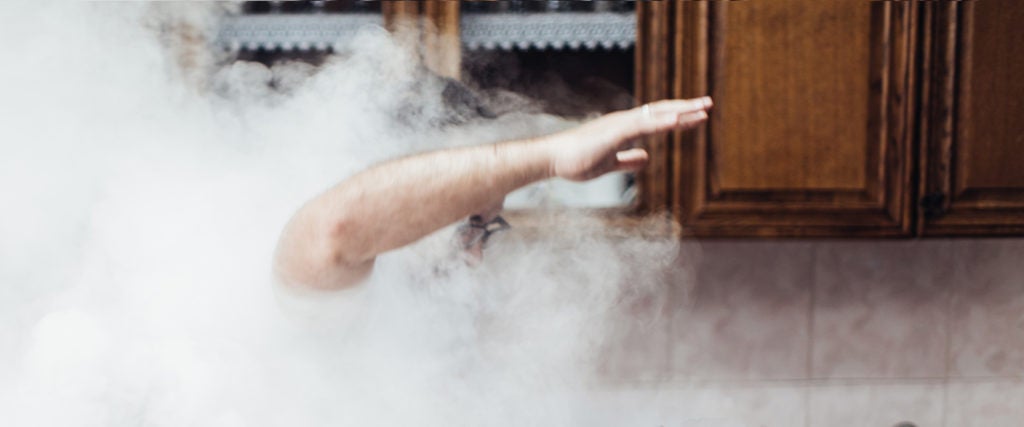Last night, as I sat down to watch a nearly decade-old season of Survivor, I smelled that familiar weed stench wafting around my apartment. It wasn’t coming from inside the home. My roommate doesn’t smoke, and I live in a state where recreational cannabis is still unlegalized. So, for the government agent reading this, I too don’t smoke.
And I hadn’t that night. Survivor binges require an intense focus on all the nearly naked himbos. I quickly deduced the stench was coming from the apartment below me. It had to be the SoundCloud bros always smoking and spitting rhymes in their apartment located right next to the laundry room.
But these days it takes only the mere thought of an uncontrolled variable in my life to send me on a spiral: Are they gonna get me high? Can cannabis molecules even transfer through the air ducts and get into my lungs? And if so, why am I complaining? This is free weed, right? Am I already high if I’m asking these irrational questions?
The science of the secondhand high
Turns out my fear was not weed-induced. It’s nearly impossible for enough cannabis to travel through an air duct and successfully zonk an unassuming neighbor. “The idea of being ‘secondhand stoned’ is a relic of Reefer Madness days, designed to scare people who had barely smelled the stuff,” says Jake Browne, co-founder of cannabis competition the Grow-Off, referring to the 1936 morality film about the alleged chaos — murder, attempted rape and a hit-and-run — that occurs when high-school students try the devil’s lettuce.
A 2015 study in the Journal of Analytical Toxicology on the effects of secondhand smoke further proves Browne’s claim that my neighbors didn’t get me stoned. Researchers sealed six cannabis smokers and six non-smokers in a room to see how many would test positive on a drug test. Multiple tested positive for 20 ng/mL (nanograms per milliliter, the unit often used to measure intoxication) concentrations. However, only one positive occurred at 50 ng/mL, which is the standard amount to trigger a positive result on a THC urine test.
Keep in mind, the single positive came from secondhand smoke in the same room. “An apartment away isn’t cause for concern,” Browne says. “Be thankful that your neighbor is taking the edge off and not the Russian guy down my hall who is screaming at his cabbage and fart stew every night.” Yeah, I’ll take my SoundCloud rappers over that dude any day.
Wait — so does that mean hotboxing doesn’t really work?
The last time I intentionally hotboxed was in my family’s 2003 Honda Odyssey in high school. I refuse to let Browne tell me that all the trouble my feigned-rebellious friends and I went through in order to get as high as possible in the back of a Target parking lot was for naught.
Hotboxing has to somewhat work, right? Alex Klotz, an assistant professor of biophysics at California State University, Long Beach, says the effectiveness of hotboxing pertains to the maximum concentration of a space. “The inside of a car is about 3 cubic meters and a gram of weed contains about 150 mg of THC, so that’s 50 mg per cubic meter,” he says. In this scenario, each breath we inhale is about 0.5 litres (or 0.0005 cubic meters). This means in a hotboxed car we’re getting about 25 micrograms of THC per breath.
That’s not the same density in an apartment, no matter how tiny my Brooklyn walk-up feels. Klotz says in a small space around 100 cubic meters, the full dilution of THC is about 750 nanograms per breath. If the THC were to diffuse through an air duct into a second closed apartment, Koltz says, that’s about 375 nanograms of THC per breath.
So the likelihood of my neighbor fully hotboxing their space and me reaping the benefits is low — but not impossible. “It would take over 10,000 breaths to get the equivalent of a small gummy,” he says. Challenge accepted, Klotz.

